The Bonney Moraines, located in the Loop Brook area of Rogers Pass, sport some of the best skiing out there. Spanning from a band of terminal moraines at the toe of the Bonney Glacier, this north-facing route offers a wide variety of terrain from straight-forward alpine skiing to all-time pillow popping. Lying at the bottom of a glacier, the cool temps and sheltered arrangement preserve the snow quality, even in the spring months. You can easily find fresh lines if you look hard enough, weeks after a storm. Mind you, this is a popular tour, given its excellent access from the Loop Brook parking lot, and 975-meter climb (a mild vertical for routes in Glacier National Park).
This route is located within a Winter Restricted Area (WRA) governed by the Winter Permit System. Please check the WRA status before travelling through it.
Related: Rogers Run On Grizzly Shoulder: Deep Days
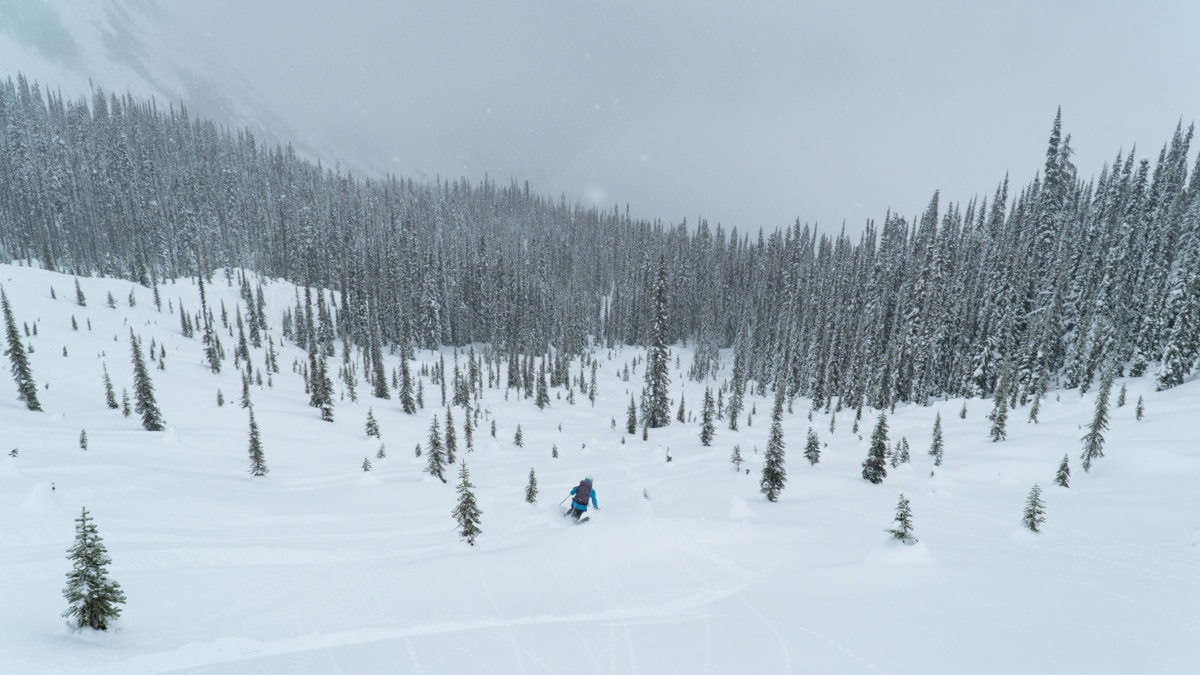
Report from January 11, 2021
Kaitlin, Guillaume, and I left the Loop Brook parking lot at 8 AM, ready to make the most of our day. We planned on skiing two laps on the moraines, something that’s totally achievable given how short its access is. We followed the glacier-fed Loop Brook, now buried under sizable white pillows. Compared to my previous outing in the early season, crossing the creek was an absolute breeze. A snow bridge had conveniently formed just before the Elephant Trunk, a deep canyon separating the Lily from the Bonney Valleys. This allowed us to easily skin over the fast-moving water. From there, we climbed alongside the slot canyon until we reached a tree island.

Once we reached the tree island, the single uptrack splits into two options:
- Veer left which puts us at the bottom of the forested hill crowned by the Bonney Moraines
- Veer right and continue along the Loop Brook towards Ross Pass which would lead us up Mt Green or Parsons Peak.
After taking a left, we climbed through the trees, spaced almost perfectly for a brisk ascent.

After no more than an hour of easy touring, we poked out of the dense forest into the alpine. The moraines stood, high above us but well within our reach. Since the avalanche hazard was forecasted at “moderate” at all elevations, we put up a conservative uptrack, keeping to the high ground when possible. We followed a gentle ridge that terminated at the top of the eastmost moraines.
Avalanche Awareness Fact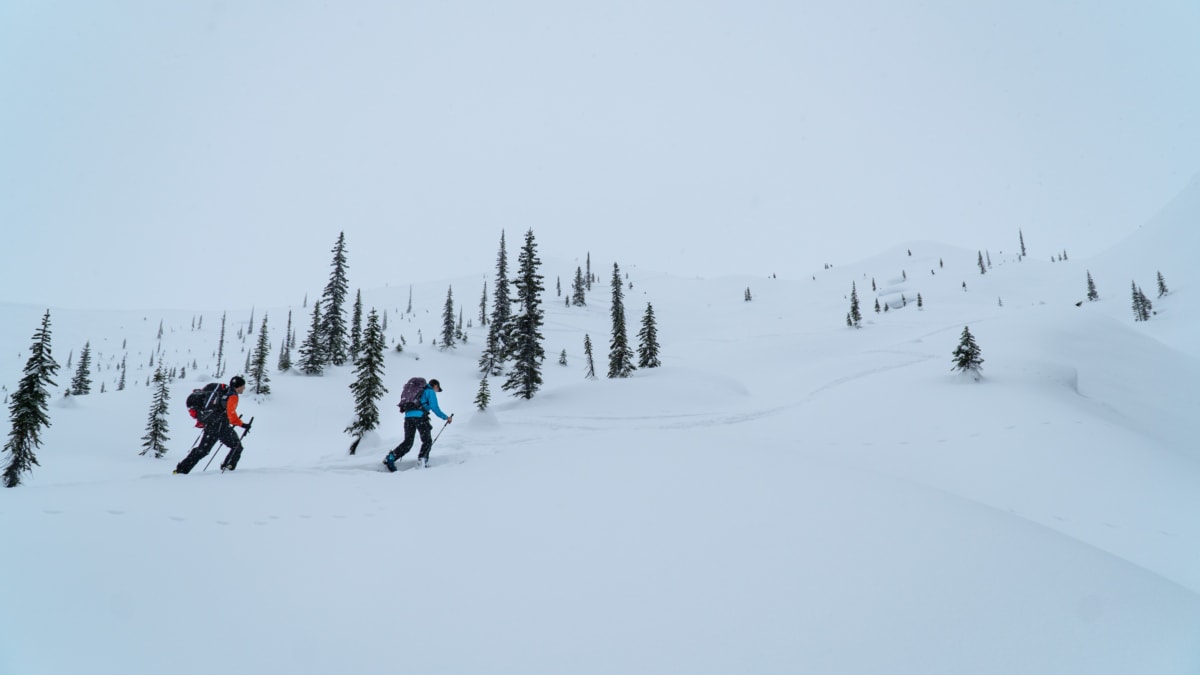
As soon as we reached the alpine, the winds picked up from the SW. We started seeing evidence of snow transport, loading our skiable terrain which was lee of the prevailing wind. It wasn’t an immediate concern but still something to consider in the future. It’s worth noting the north-facing slopes of the Bonney Moraines are typically wind-loaded by the prevailing SW winds. Always access your slope stability before committing to the ascent (and descent).

After a quick transition, we dropped into the north slope of the eastern moraine. As expected, the snow quality was excellent: boot-top powder with a firm base – just the right-side-up snow we had hoped for. One thing to note: the last storm cycle had come in rather warm and moist, dumping loads of dense snow. The current conditions reminded Guillaume of the coastal pow he used to ski in Whistler. We zig-zagged down the playful terrain, jumping off buried stumps as much as we could.

After commenting on how good the snow was (and how different from our usual it was), we proceeded through the trees, following a hidden creek bed. Our progress halted once we reached the top of a frozen waterfall. Kaitlin took the skier’s left around the steep pitch while Guillaume and I scoped out the waterfall/pillows below: totally skiable but pretty big. As tasty as it looked, we kept our conservative approach and skied around the feature. I shredded a smaller pillow line to the left. After all, this is the backcountry, not the resort.

Stoked on lap #1, we had a brisk lunch. Our hunger satiated, we toured up the eastern flank of the Bonney Moraines and followed an endless, lateral moraine, from which spanned a series of epic Alaskan spine lines. What a striking sight, from what we could see. As clouds were rolling in and out of the valley, our visibility was waning.
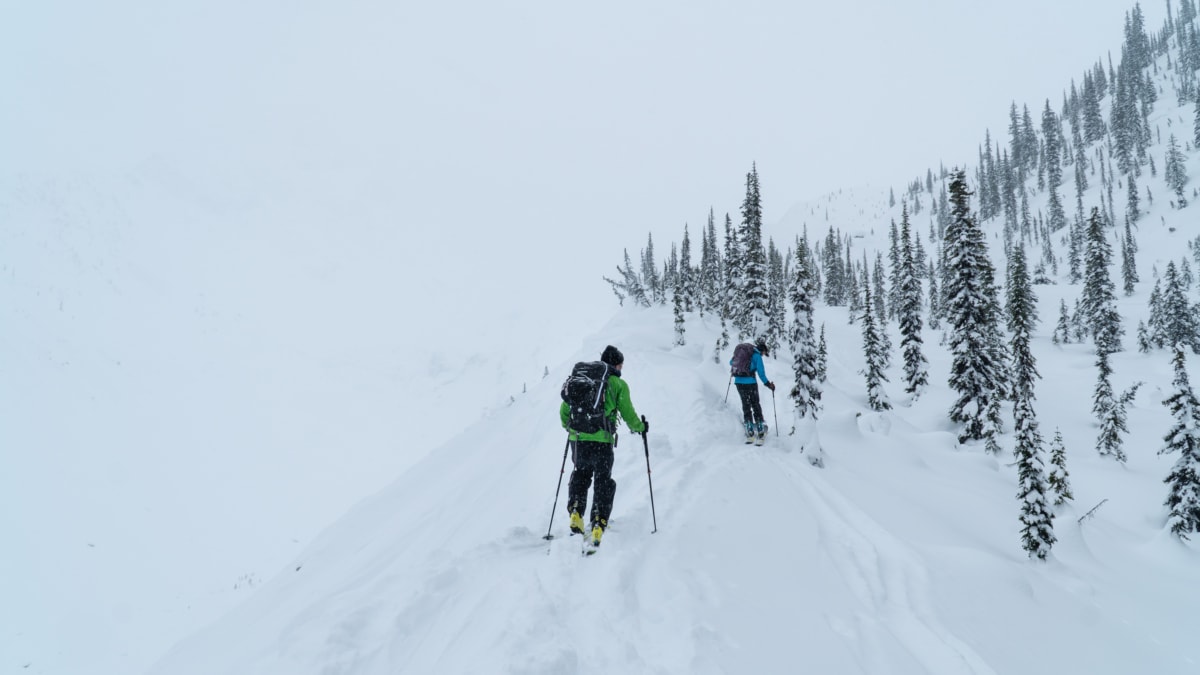
The moment we gained the alpine, a dense cloud blanketed the valley. The flat light made it almost impossible to discern the terrain ahead. After a quick discussion, we settled on climbing back moraine we had initially skied from since we were already familiar with the arrangement. We planned on skiing the NE slope below.
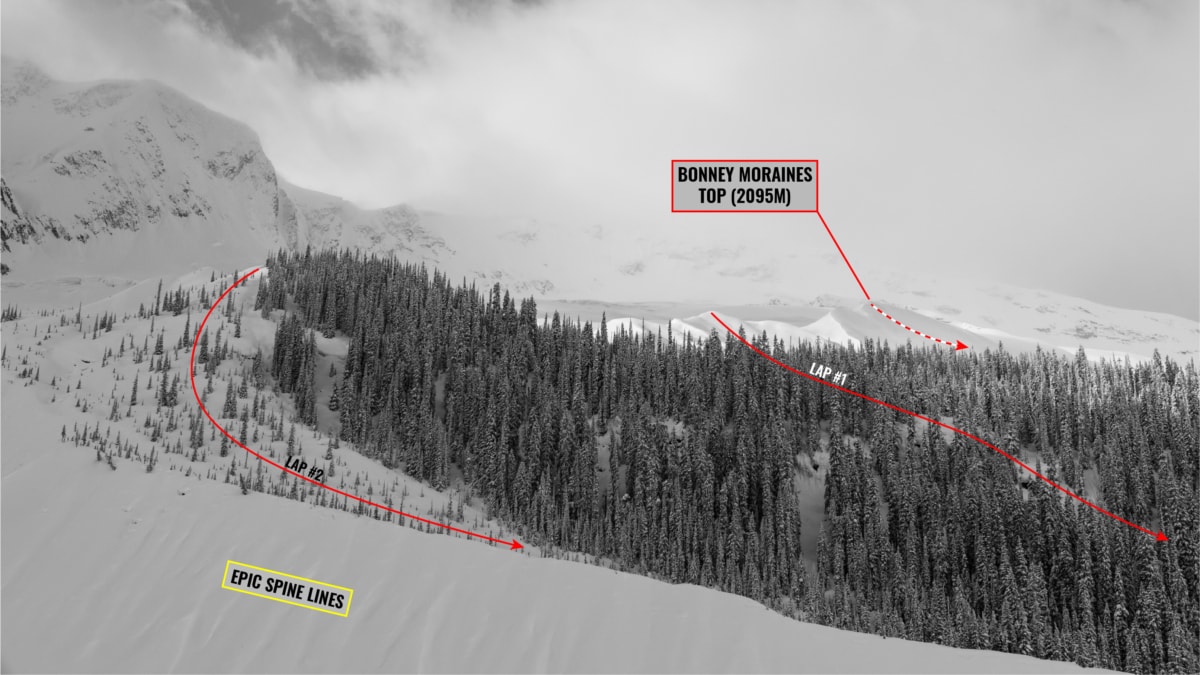
As we gained the moraine, the winds intensified into strong gusts from the SW (probably 80 km/h) that almost blew us off the top. Strange mountain weather! The snow was visibly accumulating on the lee slope. We wasted no time and transitioned for our second lap.
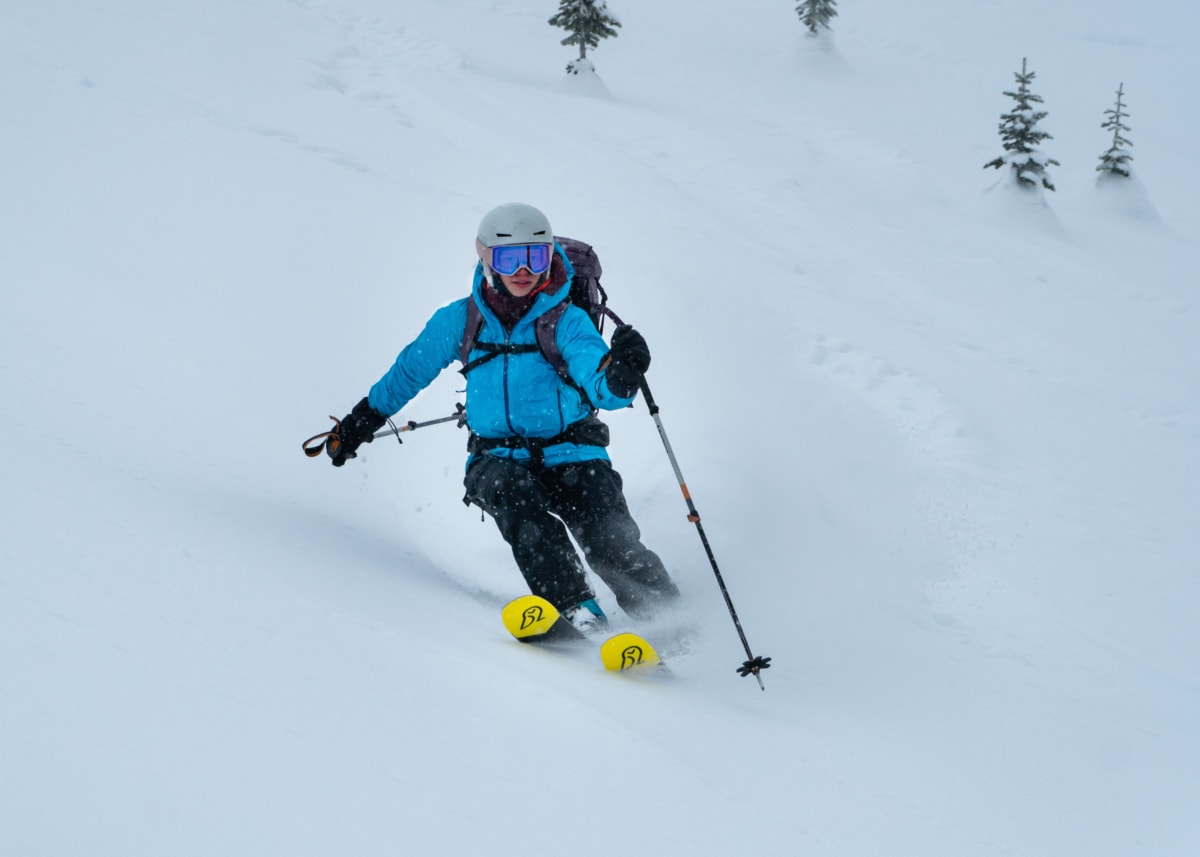
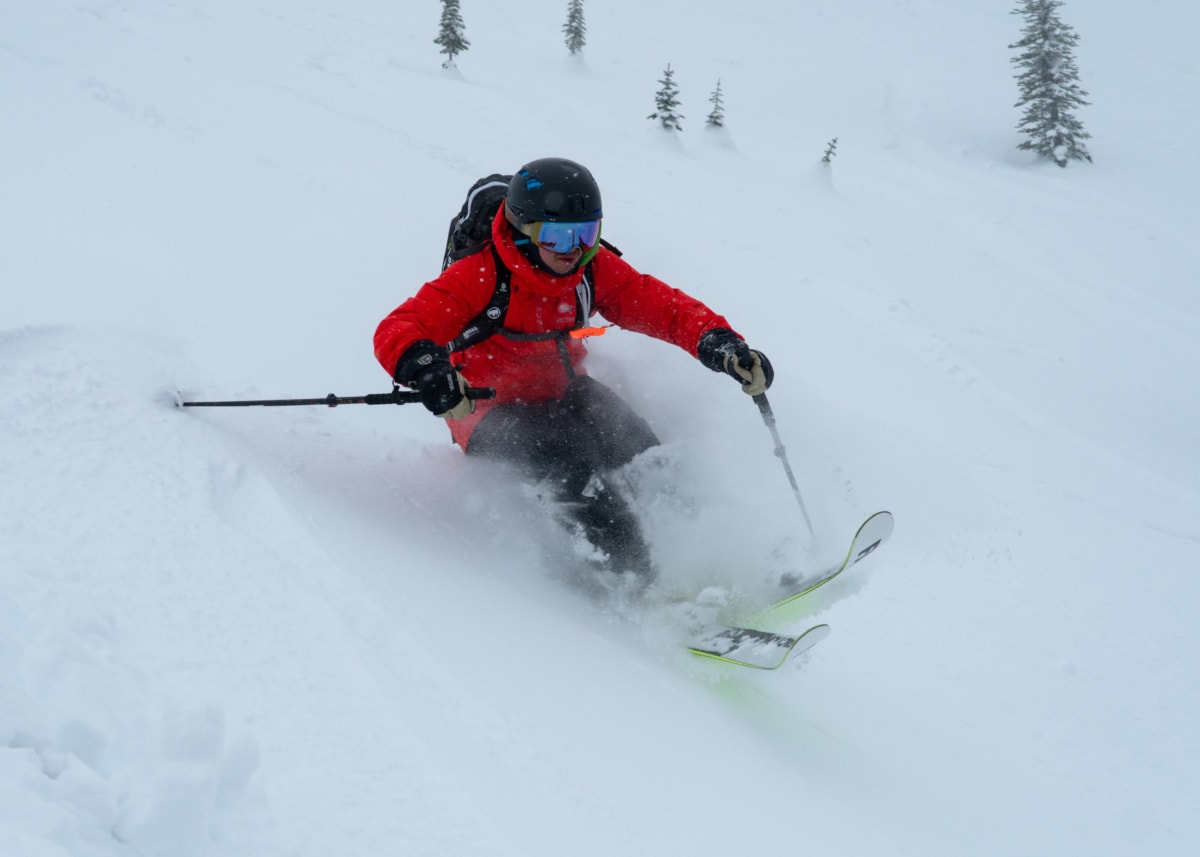
The first 100 meters of the descent were difficult. Some snow had blown into both Kaitlin’s and my googles; the cold had instantly rimed the inside of our lens. With poor visibility and icy googles, we literally felt our way down, to a point where we couldn’t differentiate up from down. After some blind skiing, the ice had finally thawed. We continued along the fall line, on a gentle slope, now peppered with small trees. After a good bit of easy skiing, we connected with our uptrack at the bottom of the forested hill, which we followed down back to the car. All in all, it was an incredible day, albeit with mildly challenging weather conditions. Just another walk in the park (pun intended)!
Statistics
| Peak Elevation | 2095m |
| Vertical Gain/Loss | 975m |
| Distance Traveled | 10km |
| Duration | 4h |
For more beta on my adventures, check out the Route Map. This online map interface is a repository of my ski touring and mountaineering adventures. Simply follow the rough trace!
